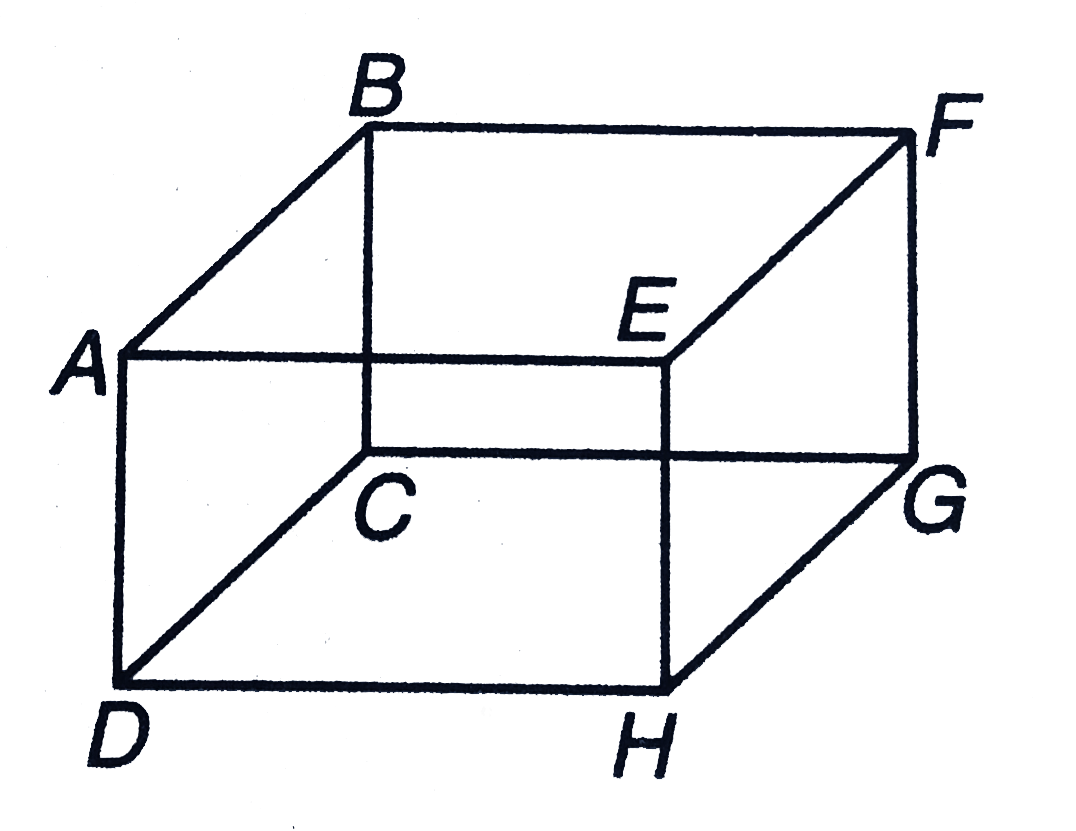(a) The charges each Q are placed at x−d,2d,4d,…∞. Find electric potential at origin O.
(b) A charge +Q is placed at each of the points x=d,x=3d,x=5d,…..,∞ on the x-axis , and a charge −Q is placed at each of the points x=2d,x=4d,x=6d,...,∞.Find the electric potential at the origin O.
(a) V0=14π∈0[Qd+Q2d+Q4d+…∞]
=14π∈0.Qd[1+12+14+…∞]
=14π∈0.Qd[11−1/2]=14π∈0.2Qd
(b) V0=14π∈0[Qd−Q2d+Q3d−Q4d+...∞]
=14π∈0Qd[1−12+13+14+...∞]
=14π∈0.Qdloge2


Topper's Solved these Questions
Similar Questions
An infinite number of charges each numerically equal to q and of the same sign are placed along the x-axis at x=1,x=2,x=4,x=8 and so on. Find electric potential at x=0.
View SolutionA charge q is placed at point D of the cube. Find the electric flux passing through the EFGH and face AEHD.

View Solution
Knowledge Check
A charge +q is fixed at each of the points x=x0, x=3x0, x=5x0,…………x=∞ on the x axis, and a charge −q is fixed at each of the points x=2x0, x=4x0, x=6x0, …………x=∞. Here x0 is a positive constant. Take the electric potential at a point due to a charge Q at a distance r from it to be Q/(4πε0r).Then, the potential at the origin due to the above system of
A(a) 0B(b) q8πε0x0ln2C(c) ∞D(d) qln24πε0x0Point charges +4q,−q are kept on the x-axis at points x=0,x=a and X=2a respectively, then
AOnly q is in stable equilibriumBNone of the charges are in equilibriumCAll the charges are in unstable equilibriumDAll the charges are in stable equilibriumTwo large identical plates are placed in front of each other at x=d and x=2d as shown in the figure. If charges on plates are Q and −5Q, the potential versus distance graph for region x = 0 to x = 3d is (d is very small and potential at x = 0 is v0)
 A
A B
B C
C D
D
3 charges are placed in a circle of radius d as shown in figure. Find the electric field along x-axis at centre of circle.

View SolutionA point charge q1=+2μC is placed at the origin of coordinates. A second charge, q2=−3μC, is placed on the x-axis at x=100cm. At what point (or points) on the x-axis will the absolute potential be zero?

View Solution(a) Two point charges Q and 16Q are fixed at separation d. Where should a third point charge be placed between them so that it experiences no force I.e. in equilibrium ?
(b) In the previous problem , if we replace Q by −Q , where should the third charge be placed on the joining the charges so that it is equilibrium ?
(c ) Three point charges Q,q and Q are placed at x=0,x=d/2 and x=d. Find q in terms of Q so that all charges are in equilibrium.
(d) Two point charges 9Q and 25Q are placed at separation d. Where should a third charge q be placed between them so that all charges are in equilibrium ? Also find the value of q and its nature.
View SolutionTwo large identical plates are placed in front of each other at x =d and x = 2d as shown in the figure. If charges on plates are Qand−5Q, the potential versus distance graph for the region x=0=3d is : (d is very small and potential at x = 0 is V0)

View SolutionAn infinite number of charges , each equal to q , are placed along the x - axis at x = 1, x=2,x=4,x=8 and so on . The potential at x = 0 due to this set of charges is
View Solution

